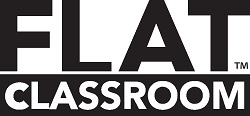What is the new literacies perspective?
New Literacies, according to Leu, Kinzer, Coiro, and Cammack, are "the skills, strategies, and dispositions necessary to successfully use and adapt to the rapidly changing information and communication technologies and contexts that continuously emerge in our world and influence all areas of our personal and professional lives. These new literacies allow us to use the Internet and other ICTs to identify important questions, locate information, critically evaluate the usefulness of that information, synthesize information to answer those questions, and then communicate the answers to others" (2004, p.1576). New Literacies are deictic, or always changing, they are are needed within the workforce, and they are used in the social context. Richardson also points out that new literacies also include critical literacies. In chapter ten of his book, he states that "consumers of the Web content need to be editors as well as readers" (2010, p.148).
What are its implications for your current or future teaching?
Virtual showcase
What are its implications for your current or future teaching?
Richardson states that "teachers need to think of themselves more as coaches who model the skills that students need to be successful and motivate them to strive for excellence" (2010, p.155).
Leu, Kinzer, Coiro, and Cammack provide multiple examples of ways to include new literacies within the classroom. These include:
• using a search engine effectively to locate information;
• evaluating the accuracy and utility of information that is located on a webpage in relation to one’s purpose;
• using a word processor effectively, including using functions such as checking spelling accuracy, inserting graphics, and formatting text;
• participating effectively in bulletin board or listserv discussions to get needed information;
• knowing how to use e-mail to communicate effectively; and
• inferring correctly the information that may be found at a hyperlink on a webpage. (2004, p.1590)
Along with suggestions from Richardson and Leu and colleagues, I feel that Web 2.0 tools, if used for educational purposes, can be very beneficial and motivating for students to use in school. I've reviewed and used many new Web 2.0 tools this semester, including blogs, wikis, wordles, glogster, prezi, and digital stories.
Virtual showcase
During the final project review and chat, Annie and I set up a chat-with-me site where many of our classmates connected with us. We had a few questions about the Web 2.0 tools that we used and their classroom applications. Greg said that he wants to use one of them with his Kindergartners. I joined Kallie's chat after reviewing her final project. We discussed the book "The Outsiders". She said that she has seen it used with 7th grade students and up, but because it covers the topic of tolerance and providing students with voice, she felt like it could be used with students in younger grades too. I felt like Shanna and Sarah's blog will definitely be a good resource to have in the future when I need information about certain disabilities. I also feel like Andrea's blog about "Road to Reading" will also be a great resource to have in the future, when reminding myself of the 5 steps or while teaching others about the "Road to Reading" program. Overall, the review session went well and everyone had a lot of great projects to share!







